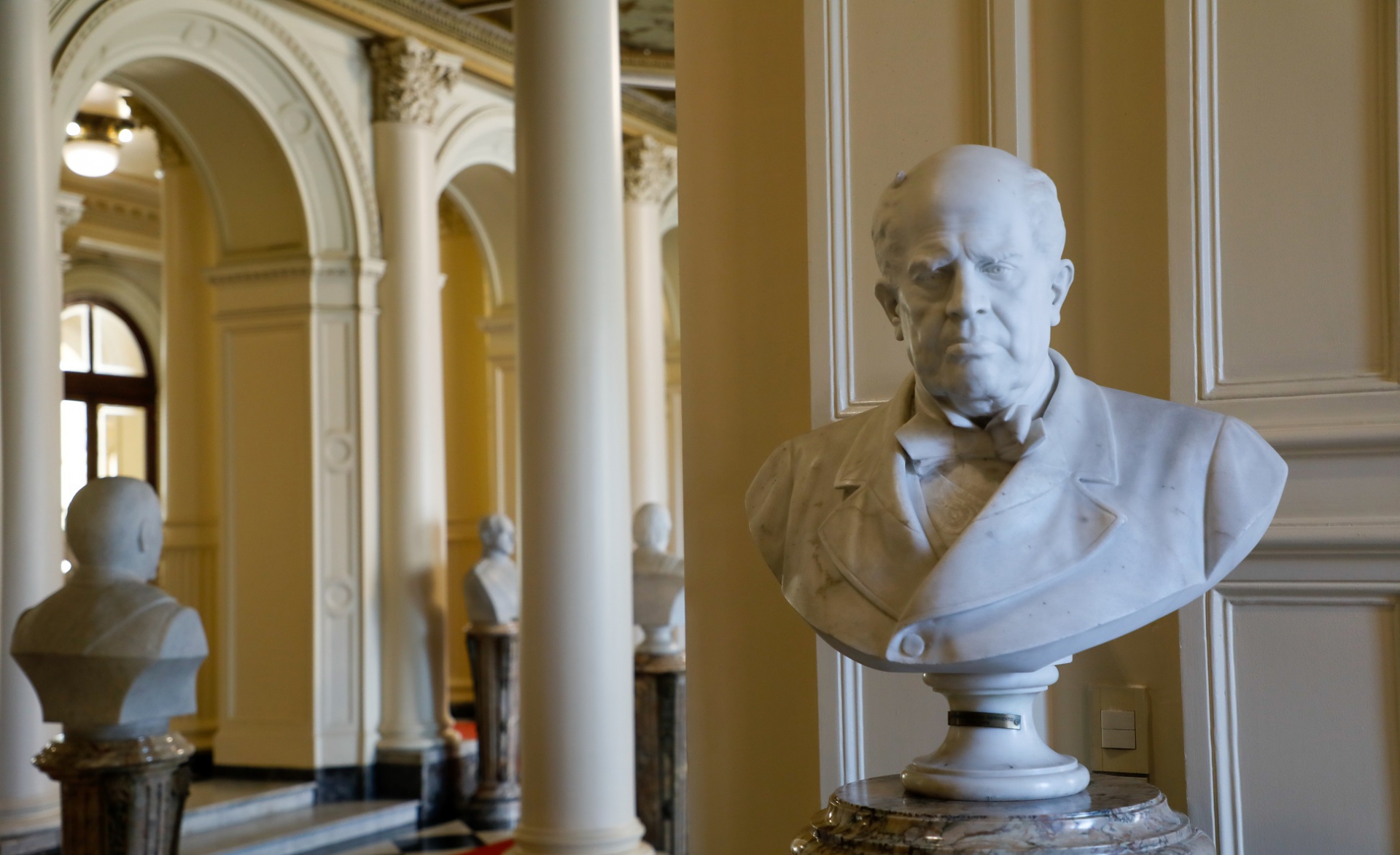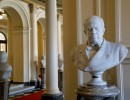Every February 15, the birth of Domingo Faustino Sarmiento, one of the most influential figures in Argentine history, is commemorated. Born in 1811 in San Juan, Sarmiento was President of the country between 1868 and 1874, noted for his fight for literacy and the imposition of compulsory primary education. He also served as Governor of the province of San Juan, Minister of the Interior, Chancellor, and Senator. His mandate is remembered as part of the ‘historic presidencies’ during which the National Organisation was consolidated. His legacy transcends politics, as he also left a deep mark on literature, journalism and critical thinking.
The son of José Clemente Quiroga Sarmiento and Paula Albarracín, his childhood was spent in humble surroundings in the San Juan neighbourhood of El Carrascal. He learned to read at the age of four thanks to his father and uncle, and later attended the ‘Escuela de la Patria’ in his hometown, an institution founded by the governments of the May Revolution.
In 1831, after Facundo Quiroga's victory, he had to take refuge in Chile, where he remained until 1836. In this country he worked in different trades to survive and began to forge his political and educational thinking.
In 1836 he returned to Argentina, and quickly joined the literary and political societies of the time, being a fundamental part of the Generation of ‘37, those liberals who opposed the Rosista regime. He founded the newspaper ‘El Zonda’ in 1839, with the aim of acting as a bridge between society and political power. His critical writings earned him censorship and the closure of the weekly.
During his second exile in Chile, he wrote one of his greatest intellectual contributions: ‘Facundo: Civilización y Barbarie’ (1845). In it, Sarmiento set out his views on the development of Latin America and his opposition to Juan Manuel de Rosas, with whom he had a political rivalry of great impact on Argentine history.
s commitment to education and the modernisation of the country continued strongly. During Bartolomé Mitre's presidency (1862-1868), Sarmiento assumed the governorship of San Juan (1862-1864). During his term of office, he passed an Organic Law of Public Education that established compulsory primary education. He also promoted teacher training through the creation of the Escuela de Señoritas.
Later, during his presidency (1868-1874), Sarmiento promoted public education and founded more than 800 schools throughout the country. His administration also included the first National Census in 1869, the creation of the Astronomical Observatory of Cordoba and the founding of the Faculty of Physical and Mathematical Sciences. In the military field, he promoted the modernisation of the armed forces and laid the foundations for the National Military College and the Naval School.
Sarmiento was committed to national integration, developing the railway and telegraph infrastructure, encouraging agricultural and livestock activity and promoting foreign investment. His vision of a modern Argentina, with education and progress as fundamental pillars, was a legacy that marked the course of the country.
After his presidency, he continued to participate in public life, both in education and politics.
He died on 11 September 1888 in Asunción, Paraguay. In his honour, Teacher's Day is commemorated every year on this date in Argentina, remembering his tireless struggle for education.
Today, 214 years after the birth of the ‘Father of the Classroom’, we remember Sarmiento and his legacy that lives on in every school and every student in the country. His passion for knowledge and his commitment to national development make him a key figure in Argentine history, whose influence endures through time.
His presence in Casa Rosada
In the ‘Hall of Honour’, also known as the ‘Gallery of the Presidential Busts’, there is a bust of Sarmiento, made by the Italian sculptor Ximenez Ettore in 1897.
In addition, four objects that belonged to the former president stand out in the Casa Rosada Museum. On the one hand, a secretaire with small drawers, of French origin, which closes like a wardrobe.
Also in the Museum is a rocking chair that belonged to Sarmiento.
A copy of the book ‘Facundo o civilización y barbarie en las pampas argentinas’, written in 1845.
His granddaughter Eugenia Belin Sarmiento, an artist from San Juan, painted a portrait of him.
His presence in Government House was also key during his mandate in aesthetic and symbolic terms; he was the President who ordered the beautification of the Government Palace with gardens and the painting of the façades in pink.

